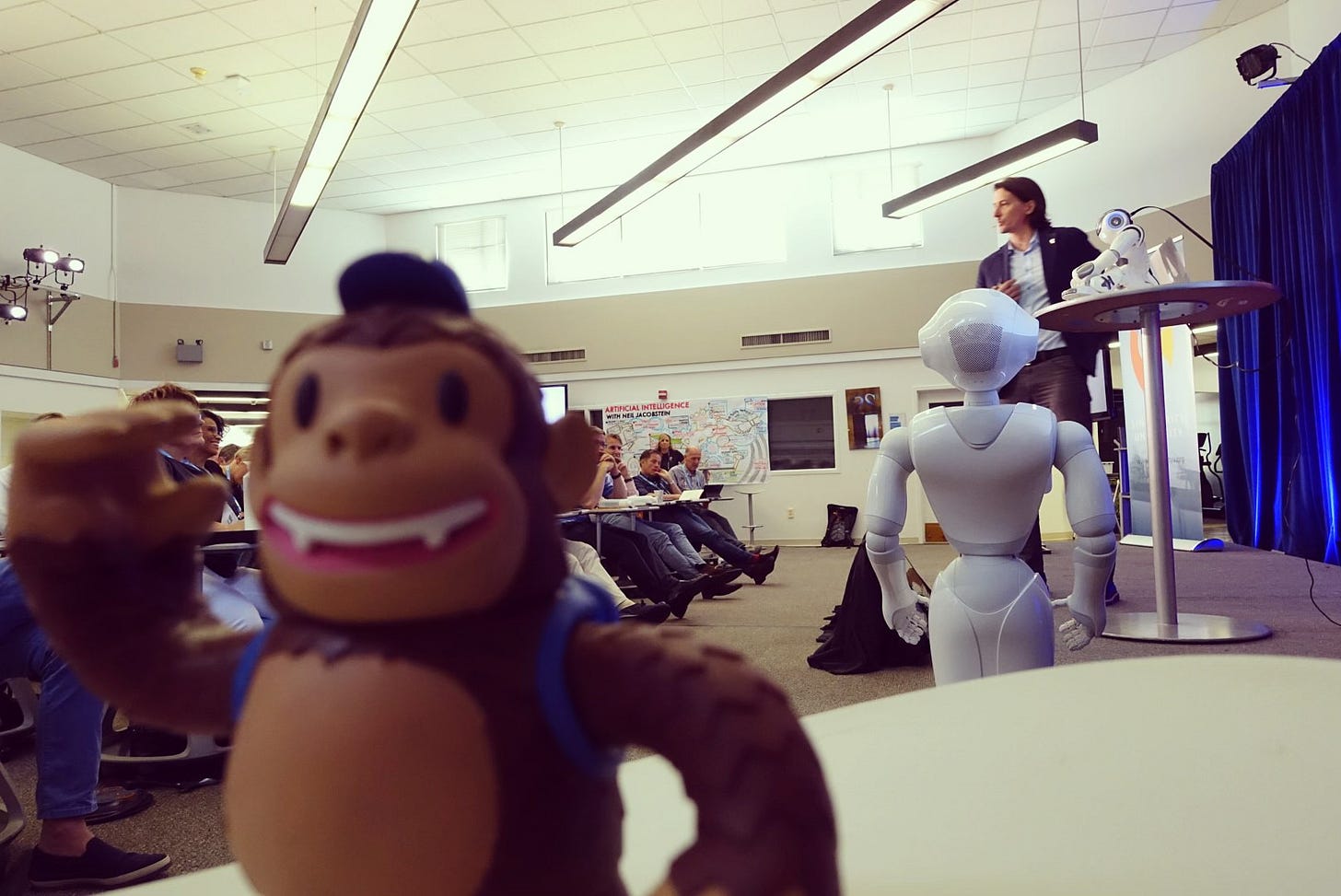The Million-Employee Company: Are We Ready for the AI Workforce Revolution?
When scaling your AI workforce becomes easier than knowing what to do with it — the looming management crisis no one is prepared for…
“The greatest danger in times of turbulence is not the turbulence itself, but acting with yesterday’s logic.” - Peter Drucker’s words echo eerily as Sarah Chen, CEO of a mid-sized software company, stared at her dashboard one Tuesday morning in 2027. Her AI agent network had just scaled to handle 100,000 concurrent tasks – equivalent to hiring 10,000 full-time employees overnight. Yet instead of celebration, she felt a creeping anxiety. “I don’t even know what half these agents are doing,” she confessed to her board.
This piece of AI fiction was, fittingly, written by an AI. I asked Claude to invent an opening story for a blog post on something I like to call the “Million-Employee Paradox” - when scaling your workforce becomes easier than knowing what to do with it.
Let’s assume AI agents will be a thing (time will tell if they truly will be able to execute complex tasks autonomously; at the moment, they are pretty far from it). And let’s also assume that they will be somewhat cheap (also an assumption at this point – OpenAI has already threatened that their PhD-class agents will set you back a cool $20,000 per month). As every good futurist will tell you, you would be remiss if you don’t, at least, take the possibility of something like this happening into account.
In a world where AI agents are cheap, plentiful, and capable, it will be less a question of “if” but rather “how.” And this brings with it an interesting (and potentially troubling) question: What do you even do with thousands of AI agents working on your behalf? What do you have them do, and how do you coordinate them?
Most leaders I talk to have an immediate answer to the question “What would you have an agent do?” – to a point. Once we have (hypothetically) fulfilled current needs, and maybe even explored activities we might be able to think about but can’t do at the moment due to resource constraints – we stutter. Sure, a handful of agents doing your social media marketing is great. Maybe another handful of them doing things you couldn’t do in the past. But what do you do with a million of them?
And herein lies a problem – as those who will find ways to reorganize their work from the ground up will benefit greatly, whereas those who still think and act in old patterns will be left behind. It’s the steam engine with its single shaft of power distribution to hundreds of electric motors scattered throughout the factory, thus enabling Ford’s conveyor belt manufacturing process, all over again.
Not surprisingly, the strongest argument against rapid AI agent scaling comes from organizational psychology. Critics point to Dunbar’s number – the cognitive limit to the number of relationships humans can effectively manage. If we can’t meaningfully coordinate with more than 150 people, how can we possibly manage millions of AI agents?
But this critique might miss a crucial point: AI agents don’t require the same type of management as humans. The key lies in creating new organizational paradigms. The future belongs not to companies with the most AI agents, but to those who master the art of human-AI orchestration. The question thus isn’t whether we’ll have million-employee companies, but who will be the first to successfully manage them.
@Pascal



Spot on as always @pascal! I mentioned this in a recent LinkedIn post that there is still so much work to be done on improving human to human collaboration and leadership and now we need to layer on top human to AI collaboration and leadership. Would be great to explore what doesn't change as well as the many things that will.